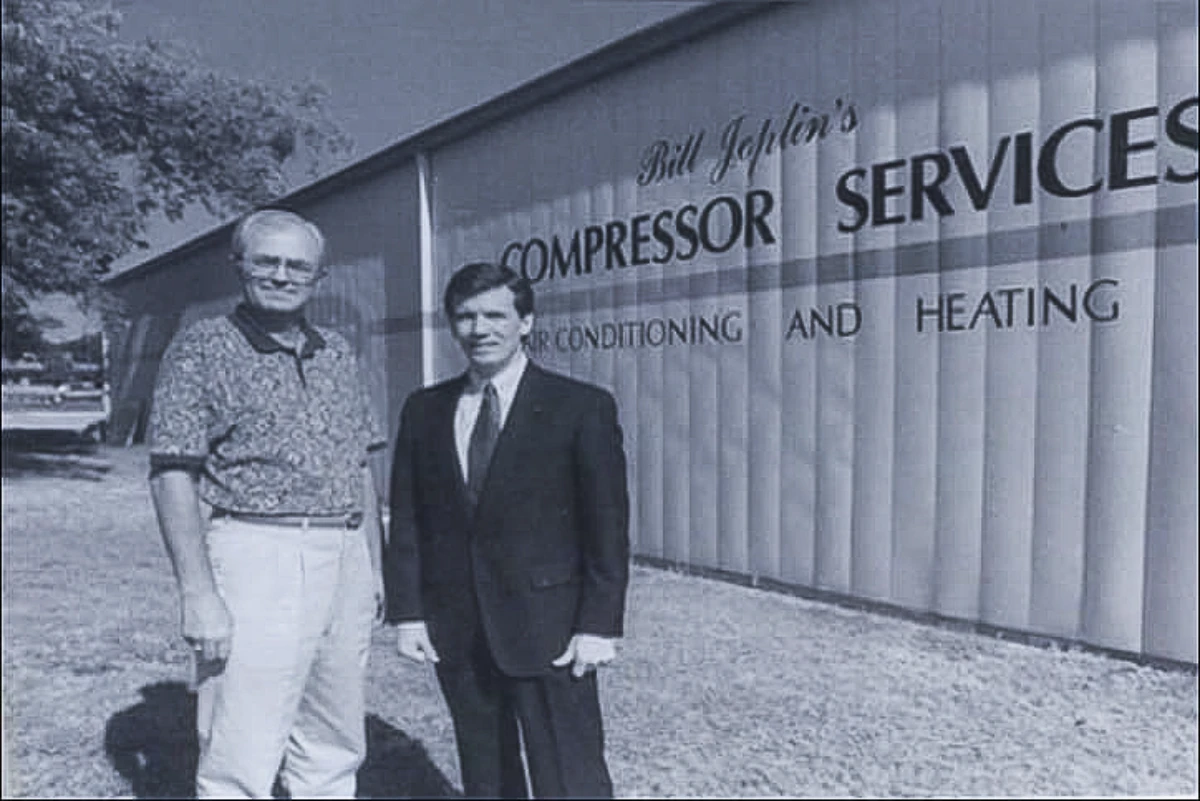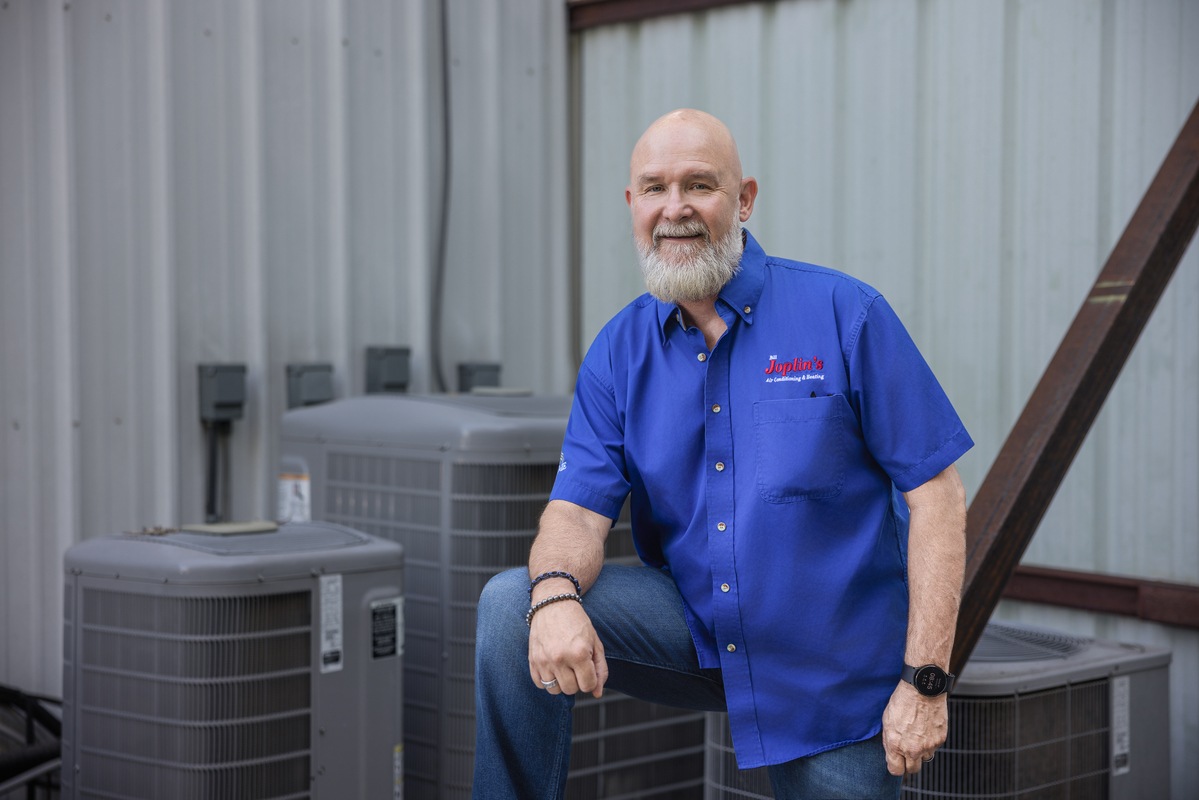Commercial HVAC Replacement in McKinney, TX
When your commercial HVAC system shows signs of declining performance or frequent breakdowns, replacement becomes a critical business decision that impacts operational efficiency, energy costs, and workplace comfort. At Bill Joplin’s Air Conditioning & Heating, we understand that commercial HVAC replacement represents a significant investment for McKinney businesses, and we’ve been helping local companies make informed decisions about their heating and cooling infrastructure since our founding in 1978.
Commercial HVAC systems typically have a lifespan of 15 to 20 years, though this varies based on usage patterns, maintenance history, and environmental factors specific to North Texas. As systems age beyond this range, they become increasingly inefficient, consuming up to 40% more energy than newer models while delivering diminished performance. We evaluate each commercial system comprehensively, examining factors like repair frequency, energy consumption trends, and compliance with current building codes to determine whether replacement offers better value than continued repairs.
Signs Your Commercial System Needs Replacement
Recognizing when replacement becomes necessary prevents unexpected system failures that can disrupt business operations and damage your reputation with customers and employees. Rising energy bills often serve as the first indicator, particularly when consumption increases despite stable usage patterns. Commercial buildings in McKinney experience extreme temperature variations throughout the year, placing substantial demands on HVAC equipment that accelerates wear and degradation of critical components.
Frequent repairs represent another clear signal that replacement makes economic sense. When repair costs exceed 50% of replacement value annually, or when major components like compressors, heat exchangers, or control systems fail repeatedly, continuing to patch an aging system becomes financially impractical. We also consider factors unique to commercial operations, such as inconsistent temperature zones throughout your building, excessive humidity levels that affect product storage or equipment operation, and unusual noises or odors that indicate serious mechanical issues. Indoor air quality concerns have gained prominence recently, and older systems often cannot accommodate modern filtration technologies that protect employee health and productivity.
Commercial HVAC Technology Advancements
Modern commercial HVAC systems incorporate sophisticated technologies that dramatically improve efficiency and control compared to equipment installed even a decade ago. Variable refrigerant flow systems allow precise temperature control in different zones, enabling businesses to heat or cool only occupied areas while maintaining minimal conditioning in unused spaces. These systems achieve efficiency ratings exceeding 30 SEER in optimal conditions, compared to older units that typically operate at 10-13 SEER ratings.
Smart building integration capabilities transform how businesses manage their climate control systems. Advanced controllers learn usage patterns, automatically adjusting settings based on occupancy schedules, weather forecasts, and real-time energy pricing. Remote monitoring capabilities allow facility managers to track system performance, receive maintenance alerts, and adjust settings from anywhere, reducing the need for on-site personnel and enabling rapid response to comfort complaints. Heat recovery systems capture waste energy from cooling processes to provide hot water or supplemental heating, further reducing operational costs for McKinney businesses.
Planning Your Commercial Replacement Project
Successful commercial HVAC replacement requires careful planning to minimize business disruption while ensuring the new system meets current and future needs. We begin with comprehensive load calculations that account for building orientation, insulation levels, window specifications, occupancy patterns, and heat-generating equipment. These calculations ensure proper system sizing, as oversized units cycle frequently, causing temperature swings and excessive wear, while undersized systems run continuously without maintaining comfort levels.
The replacement process involves multiple phases that we coordinate to maintain business continuity. Initial assessment includes evaluating existing ductwork, electrical systems, and structural supports to determine necessary modifications. We develop detailed project timelines that identify critical path activities and potential scheduling conflicts with business operations. Many McKinney businesses opt for phased replacements, updating systems in sections to maintain partial operation throughout the project. Weekend and after-hours installation minimizes customer impact, though some businesses find temporary cooling or heating solutions necessary during critical replacement phases.
Energy Efficiency and Cost Considerations
Commercial HVAC replacement offers substantial opportunities for energy savings that offset initial investment costs through reduced operational expenses. Modern high-efficiency systems consume 30-50% less energy than equipment manufactured before 2010, translating to thousands of dollars in annual savings for typical commercial buildings. Federal tax incentives and utility rebates available to McKinney businesses can reduce replacement costs by 10-30%, making upgrades more financially attractive.
- Energy Recovery Ventilators: capture exhaust air energy to precondition incoming fresh air, reducing heating and cooling loads by up to 20%
- Economizer Controls: utilize outdoor air for free cooling when conditions permit, significantly reducing compressor runtime during mild weather
- Demand-Controlled Ventilation: adjusts fresh air intake based on occupancy levels, preventing over-ventilation during low-occupancy periods
Long-term operational savings extend beyond energy costs. New systems require less frequent maintenance, experience fewer breakdowns, and often include extended warranty coverage that protects against unexpected repair expenses. Improved comfort and air quality enhance employee productivity and reduce absenteeism, providing indirect financial benefits that strengthen the business case for replacement.
Installation Process and Timeline
Commercial HVAC replacement projects in McKinney typically require two to four weeks from equipment ordering to final commissioning, depending on system complexity and building size. We coordinate with local permitting authorities to ensure compliance with current mechanical codes and schedule necessary inspections throughout the installation process. Equipment staging areas must accommodate large rooftop units or multiple split systems while maintaining safe access routes for building occupants and our installation crews.
The installation sequence begins with disconnecting and removing existing equipment, followed by any necessary structural modifications or electrical upgrades. New equipment placement requires careful rigging for rooftop units, often necessitating crane services for larger commercial buildings. Ductwork modifications ensure proper airflow distribution, while new control wiring enables advanced system features. Refrigerant piping installation follows strict EPA protocols, with pressure testing and evacuation procedures that prevent leaks and ensure optimal system performance. Final commissioning involves comprehensive testing of all system functions, control sequences, and safety devices before releasing the system for normal operation.
Bill Joplin’s Air Conditioning & Heating brings decades of experience serving McKinney’s commercial sector, understanding the unique challenges businesses face when replacing critical HVAC infrastructure. Our comprehensive approach addresses immediate comfort needs while positioning your business for long-term operational efficiency and reliability in North Texas’s demanding climate conditions.


